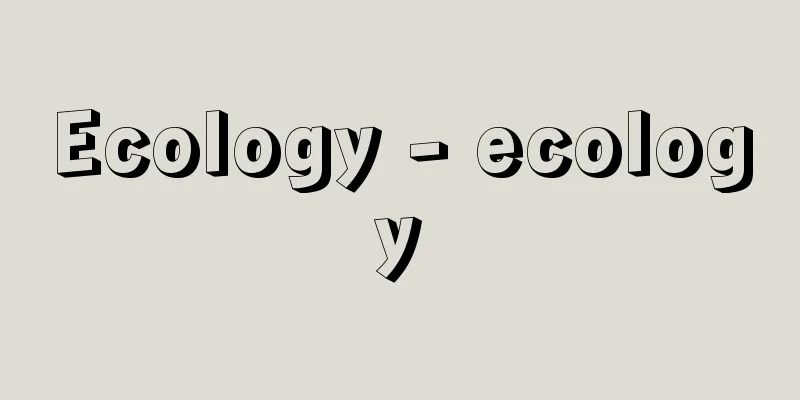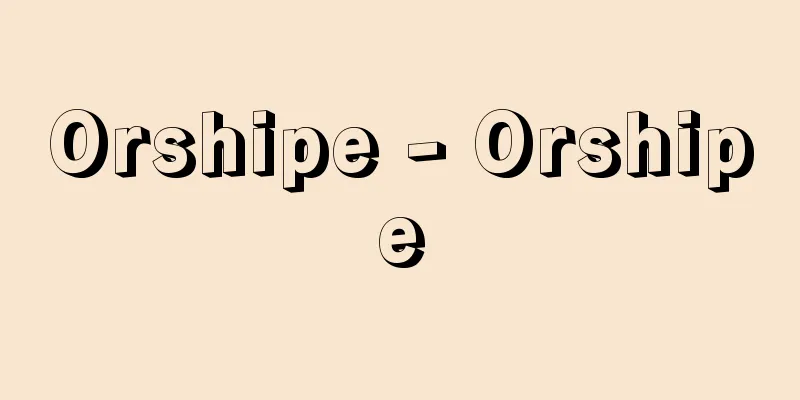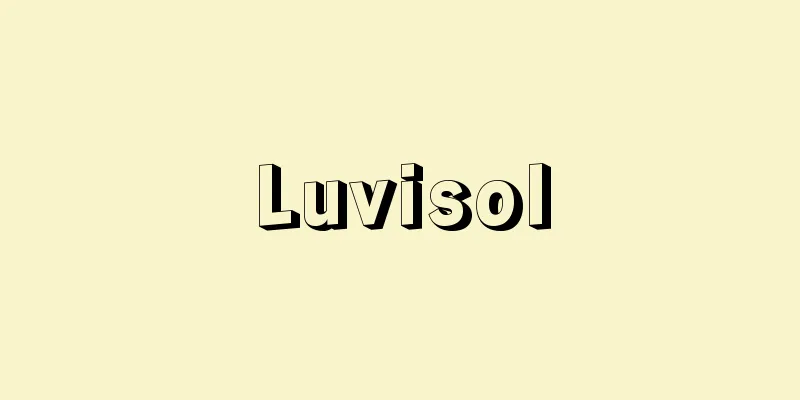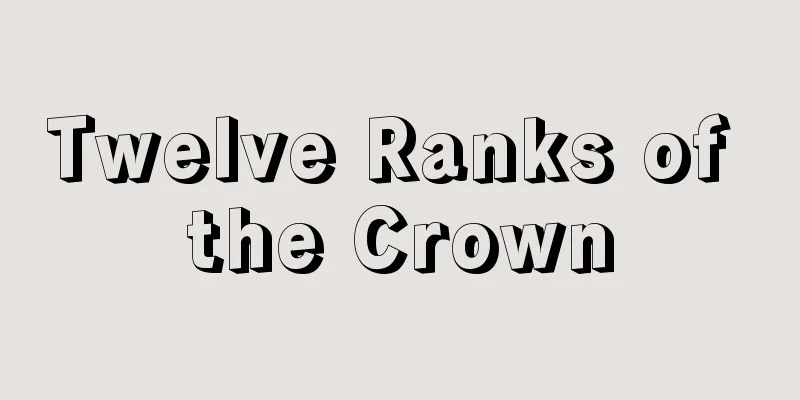Ecology - ecology

|
A branch of biology that deals with the lives of living organisms, the relationships between them, and the interactions between them and their environment. In English, French, and German, the word ecology is derived from a combination of the Greek words oikos (house, finances) and logos (logic, science). In other words, it means the study of the lives and ways of living of living organisms, so the word ecology is sometimes used to mean the ecological characteristics of organisms, but sometimes simply the way they live. It is a field that deals with a very diverse and wide range of phenomena, and depending on the level of biological phenomena that it deals with, it can be divided into autecology, which deals with phenomena at the individual level of organisms, autoecology, population ecology, which deals with populations, species ecology, which deals with species, community ecology, which deals with communities, and ecosystem ecology, which deals with ecosystems. It is also further divided into animal ecology, plant ecology, forest ecology, marine ecology, chemical ecology, evolutionary ecology, and conservation ecology, depending on the organisms, environments, methods, and perspectives targeted. Ecosystem: A concept in ecology that considers all living organisms inhabiting a certain space and the inorganic environment surrounding them as a system, that is, a single entity consisting of many interacting elements. For example, in lakes and ponds, various organisms such as fish, plankton, aquatic plants, and microorganisms on the lake bottom live, and not only do they live by influencing each other as producers, consumers, and decomposers, but they also interact with the inorganic environment, such as the lake water, sediments on the lake bottom, and the atmosphere. Phytoplankton grow by using minerals in the water, and the excrement and carcasses of animals such as fish that eat them are decomposed by microorganisms, affecting the water quality and sediments. In particular, when we focus on material circulation and energy flow, a lake, for example, can be considered as a system, a lake ecosystem, including not only the organisms that live there but also inorganic elements such as water and sediments. Ecosystems can be considered at various environmental and spatial levels, from small puddles to lakes, rivers, oceans, forests, grasslands, deserts, and even the entire Earth. [Biotic community] In ecology, this term refers to all the biological elements contained in an ecosystem, that is, the living part of the ecosystem. It can also be simply called a community. In society in general, it is common to call what should be called a biological community ecologically an ecosystem, but this is a misuse of the term. An ecosystem is a system that includes not only biological elements but also non-biological elements. Generally, a biological community contains various organisms that are connected by various relationships and influence each other. The relationships between organisms within a community (interspecific relationships) are very diverse, but the main relationships are as follows: (1) predation: a relationship of prey and being preyed upon; (2) competition: a relationship in which organisms compete for the same resources (food, space, etc.); and (3) symbiosis: a relationship in which organisms depend on each other to live. In particular, to understand the circulation of materials and the flow of energy within an ecosystem, it is necessary to analyze the predation relationship within the community. This is because the transfer of materials and energy between organisms occurs through predation relationships. A chain of relationships in which phytoplankton are eaten by zooplankton, which are then eaten by sardines, is called a food chain. However, the predation relationships within an actual biological community are more complicated, with A being eaten by B, C, and D, B being eaten by C and D, and C and D being eaten by E. In many cases, the relationships are more like a mesh than a straight chain, and so the term food web has recently come into use. Organisms selectively take in substances contained in food that are useful for their biological activity, and selectively excrete harmful substances. Therefore, when dangerous radioactive nuclides that resemble useful elements or harmful artificial compounds such as PCBs that are difficult to excrete are released into the environment, a phenomenon known as biological accumulation occurs, in which they accumulate in organisms higher up the food chain. It is known that organisms that live in similar ways, such as the Japanese weasel and the Korean weasel, or the Kanto dandelion and the common dandelion, often exclude each other and cannot coexist in the same place for long periods of time because they are in a fierce competitive relationship competing for the same resources (competitive exclusion principle). As a result, a phenomenon called habitat segregation occurs in which multiple organisms that live in similar ways but coexist in the same ecosystem are distributed in slightly different habitats. One example of a phenomenon that occurs as a result of the interaction between the biotic and abiotic elements that make up an ecosystem is called ecological succession. For example, in a place where vegetation is completely destroyed by a volcanic eruption and the land is completely bare and covered with lava, over time, lichens and mosses will first grow on the surface of the rocks, then herbaceous and woody plants will invade, and after several decades, grasslands will form, and after several hundred years, forests will form and various animals will be able to live there. This change in the biological community is not simply a result of changes in the environment. Just as early plants weathered rocks to form soil, changing the environment to one in which herbaceous and woody plants could grow, this is the result of organisms changing the environment through their own activities (environmental formation), and this environmental change in turn changing the biological community. Ecological succession progresses through such interactions between organisms and the environment. In the ecological succession of terrestrial vegetation, the change occurs toward a climax, which is a stable vegetation determined by the climate and geological conditions of the area. For example, in the lowlands west of the Kanto region in Japan, evergreen broadleaf forests dominated by evergreen broadleaf trees such as Castanopsis cuspidata and Tabu trees are the climax forests, while in the mountainous areas of the Tohoku region, deciduous broadleaf forests dominated by beech trees are the climax forests. Even if the vegetation is destroyed, the climax forests will recover after several hundred years. The vegetation that corresponds to the climax forest in that region is sometimes called the original vegetation. [Biodiversity] A coined word derived from biological diversity. There are various levels of diversity in living organisms, such as diversity of the species, diversity of genetic variation within the same species, and diversity of ecosystems. Since each level of diversity has many aspects, biological diversity is defined in various ways. The Convention on Biological Diversity, which came into force in 1993, defines it as "the variability among all living organisms, regardless of their habitat, whether they live on land, in marine or other aquatic ecosystems, or in ecosystems that combine these ecosystems, and includes diversity within species, diversity between species, and diversity of ecosystems." Currently, the "biodiversity crisis," which many scientists fear from the perspective of global environmental conservation, refers to the rapid loss of "species diversity," that is, the situation in which many species are becoming extinct at an unprecedented rate around the world. To address this species diversity crisis, wildlife conservation to prevent the extinction of wildlife is urgently needed in various ecosystems around the world. The main causes of species extinction include habitat destruction by humans, as typified by the decline of tropical rainforests, and the introduction of invasive species, as typified by black bass and bluegill. Tropical rainforests, which make up only about 7% of the Earth's surface area, are said to be home to more than 50% of the planet's species, and their destruction is causing the extinction of a huge number of species. In addition, black bass and bluegill, which are powerful carnivorous freshwater fish brought to Japan from North America, have had a major impact on Japan's freshwater ecosystem, which previously lacked powerful carnivorous fish, and have led to a decline in native fish species, such as bitterlings. →Behavioral ecology →Ecological psychology [Koshima Shiro] Latest Sources Psychology Encyclopedia Latest Psychology Encyclopedia About Information |
|
生物の生活や生物同士の関係,生物と環境との相互作用を扱う生物学の一分野。英語,フランス語,ドイツ語ともに,エコロジーということばはギリシア語のoikos(家,家計)とlogos(論理,学問)を組み合わせたものを語源としている。つまり,生物の生活,生き方に関する学問という意味をもつため,生態ecologyということばは,生物の生態学的特徴という意味で使われることもあるが,単にその生物の生き方という意味で使われることもある。非常に多様で幅広い現象を扱う分野で,主に対象とする生物現象のレベルによって,生物の個体レベルの現象を扱う個生態学autecology,autoecologyや個体群を扱う個体群生態学population ecology,種を扱う種生態学species ecology,群集を扱う群集生態学community ecology,生態系を扱う生態系生態学ecosystem ecologyに分けられる。また,対象とする生物や環境,手法,視点によって,動物生態学animal ecologyや植物生態学plant ecology,森林生態学forest ecologyや海洋生態学marine ecology,化学生態学chemical ecology,進化生態学evolutionary ecology,保全生態学conservation ecologyなどに細分される。 【生態系ecosystem】 一定の空間に生息するすべての生物と,それらを取り巻く無機的環境の総体を,一つの系system,つまり相互に作用する多くの要素が集まった一つのまとまりとしてとらえた生態学の概念である。たとえば湖や沼には,魚やプランクトン,水草,湖底の微生物などさまざまな生物が生息しており,生産者・消費者・分解者として互いに影響を及ぼし合って生きているだけでなく,湖の水や湖底の堆積物,大気などの無機的環境とも相互作用している。水中のミネラルを利用して植物プランクトンが増殖し,それを食べる魚などの動物の排泄物や死体が微生物に分解されて水質や堆積物に影響する,といった相互作用である。とくに物質循環やエネルギーの流れに着目すると,たとえば湖は,そこに生息する生物だけでなく,水や堆積物などの無機的要素も含めて,ひとまとまりの系,湖沼生態系lake ecosystemとしてとらえることができる。生態系は,小さな水たまりから湖沼,河川,海洋,森林,草原,砂漠,果ては地球全体まで,さまざまな環境や空間レベルで考えることができる。 【生物群集biotic community】 生態学では,生態系に含まれる生物的要素の全体,つまり生態系の生物部分を示すことば。単に群集communityとよぶ場合もある。社会一般では,生態学的には生物群集とよぶべき対象を生態系とよんでいる例がよく見受けられるが,誤用である。生態系は生物的要素だけでなく非生物的要素も含んだ系だからである。一般に,生物群集には多様な関係で結ばれたさまざまな生物が含まれ,互いに影響を及ぼし合っている。群集内の生物同士の関係(種間関係)は非常に多様であるが,主な関係としては以下のものがある。⑴捕食predation:食う食われる関係,⑵競争competition:同一の資源(食物や空間など)を奪い合う関係,⑶共生symbiosis:互いに依存し合って生きる関係,である。とくに生態系内での物質循環やエネルギーの流れを理解するには,群集内の捕食関係を分析する必要がある。生物間での物質やエネルギーの受け渡しは捕食関係によって生じるからである。植物プランクトンを動物プランクトンが食べ,動物プランクトンをイワシが食べるといった,食う食われる関係の連鎖は食物連鎖food chainとよばれる。しかし実際の生物群集内での捕食関係はもっと複雑で,AはBにもCにもDにも食べられ,BはCとDに,CとDはEに食べられるというように,まっすぐな鎖状ではなく網目状の関係になることが多いため,最近では食物網food webということばが使われるようになった。生物は食物に含まれる生物活動に有用な物質を選択的に取り込み,有害な物質を選択的に排出する。したがって,有用な元素に似た危険な放射性核種や,排出の困難なPCBなどの有害人工化合物が環境に放出されると,食物連鎖の上位に位置する生物に濃縮される生物濃縮biological accumulationという現象が生じることが知られている。ニホンイタチとチョウセンイタチ,カントウタンポポとセイヨウタンポポのように,よく似た生き方をする生物は,さまざまな同じ資源を奪い合う激しい競争関係にあるため,互いに排除し合い長期間同じ場所に共存することができないことが多いことが知られている(競争排除則competitive exclusion principle)。その結果,同じ生態系に共存する,よく似た生き方の複数の生物種が,それぞれ少しずつ異なる生息場所に分かれて分布するすみわけhabitat segregationとよばれる現象が生じる。 生態系を構成する生物的要素と非生物的要素の相互作用によって生じる現象の一例に,生態遷移ecological successionまたは遷移successionとよばれる現象がある。たとえば,火山噴火で植性が完全に破壊され,溶岩に覆われた完全な裸地となった場所にも,時間がたてば,まず岩の表面に地衣類やコケ類が生え,次には草本や木本が侵入して,数十年後には草原が,数百年後には森林が成立しさまざまな動物も生息できるようになる。このような生物群集の変化は単に環境の変化に応じて生じたものではない。初期の植物が岩石を風化させて土壌を形成し,環境を草本や木本が生育可能なものに変えたように,生物が自らの活動によって環境を変え(環境形成作用),さらに,その環境変化が生物群集を変化させた結果である。生態遷移は,このような生物と環境の相互作用によって進行する。陸上植生の生態遷移では,その地域の気候や地質条件などで決まる安定な植生である極相climaxに向かって変化する。たとえば日本の関東以西の低地では,スダジイやタブなどの照葉樹が優占する常緑広葉樹林が,東北地方の山地帯ではブナが優占する落葉広葉樹林がそれぞれ極相であり,植性が破壊されても数百年たてば極相林が回復する。その地域の極相に相当する植生を原植生original vegetationとよぶこともある。 【生物多様性biodiversity】 生物学的多様性biological diversityから作られた造語。生物には,種の多様性diversity of the species,同種内の遺伝的変異の多様性,生態系の多様性など,さまざまなレベルの多様性がある。また,各レベルの多様性にも多くの側面があるため,生物学的多様性はさまざまに定義されているが,1993年発効の生物多様性条約では「すべての生物(陸上生態系,海洋その他の水界生態系,これらが複合した生態系その他生息又は生育の場のいかんを問わない。)の間の変異性をいうものとし,種内の多様性,種間の多様性及び生態系の多様性を含む」と定義されている。現在,多くの科学者が地球環境保全の観点から危惧している「生物多様性の危機」とは,「種の多様性」の急激な喪失,つまり世界各地で多くの生物種がかつてないほどの速度で絶滅しつつある状況を指している。このような種の多様性の危機に対処するため,野生生物の絶滅を食い止める野生生物保全wildlife conservationが世界各地のさまざまな生態系で急務となっている。 種の絶滅の大きな原因には,熱帯雨林の減少に代表される人間による生息地破壊,ブラックバスやブルーギルに代表される外来生物の侵入などがある。地球表面積のわずか約7%しかない熱帯雨林には,地球上の生物種の50%以上が生息するといわれ,その破壊は膨大な数の生物種の絶滅を引き起こしている。また,北米から日本に持ち込まれた強力な魚食性淡水魚であるブラックバスやブルーギルは,タナゴなどの在来魚種の減少など,強力な魚食性魚のいなかった日本の淡水生態系に大きな影響を与えている。 →行動生態学 →生態心理学 〔幸島 司郎〕 出典 最新 心理学事典最新 心理学事典について 情報 |
Recommend
Udonga - Udonge
〘Noun〙 (Abbreviation of "Udonharage (Udonpara...
Virgo Cluster of Galaxy
A galaxy cluster in the constellation Virgo. The ...
flexible strategic (nuclear) response
…Schlösinger began to revise the targeting doctri...
Monosuccharide
…Most of them have the molecular formula (CH 2 O)...
Entrance examination
An exam to select those who will be admitted from ...
Katsurada Fujiro - Katsurada Fujiro
Pathologist. Born in Daishoji, Kaga Province (Kag...
rhythmic layering
…Rhythmic layering is often observed in rocks. Th...
Sensitive plant
…The leaves are alternate, with 2-4 pinnate compo...
Natural numbers
Natural numbers are numbers used to count things ...
Cirsium pendulum (English spelling) Cirsiumpendulum
…[Hiroshi Aramata]. … *Some of the terminology ex...
Ruan Xian - Genkan
A plucked string instrument from the Tang Dynasty...
Kabuki folding screen
…The emergence of shibai-e began at the same time...
Hainan Neo-Confucianism
[Noun] (Named after its rise in Tosa Province (Koc...
Yamamoto Baiitsu
A Southern painter of the late Edo period. His gi...
Wilbye, J.
…These Italian madrigals were introduced to Engla...









